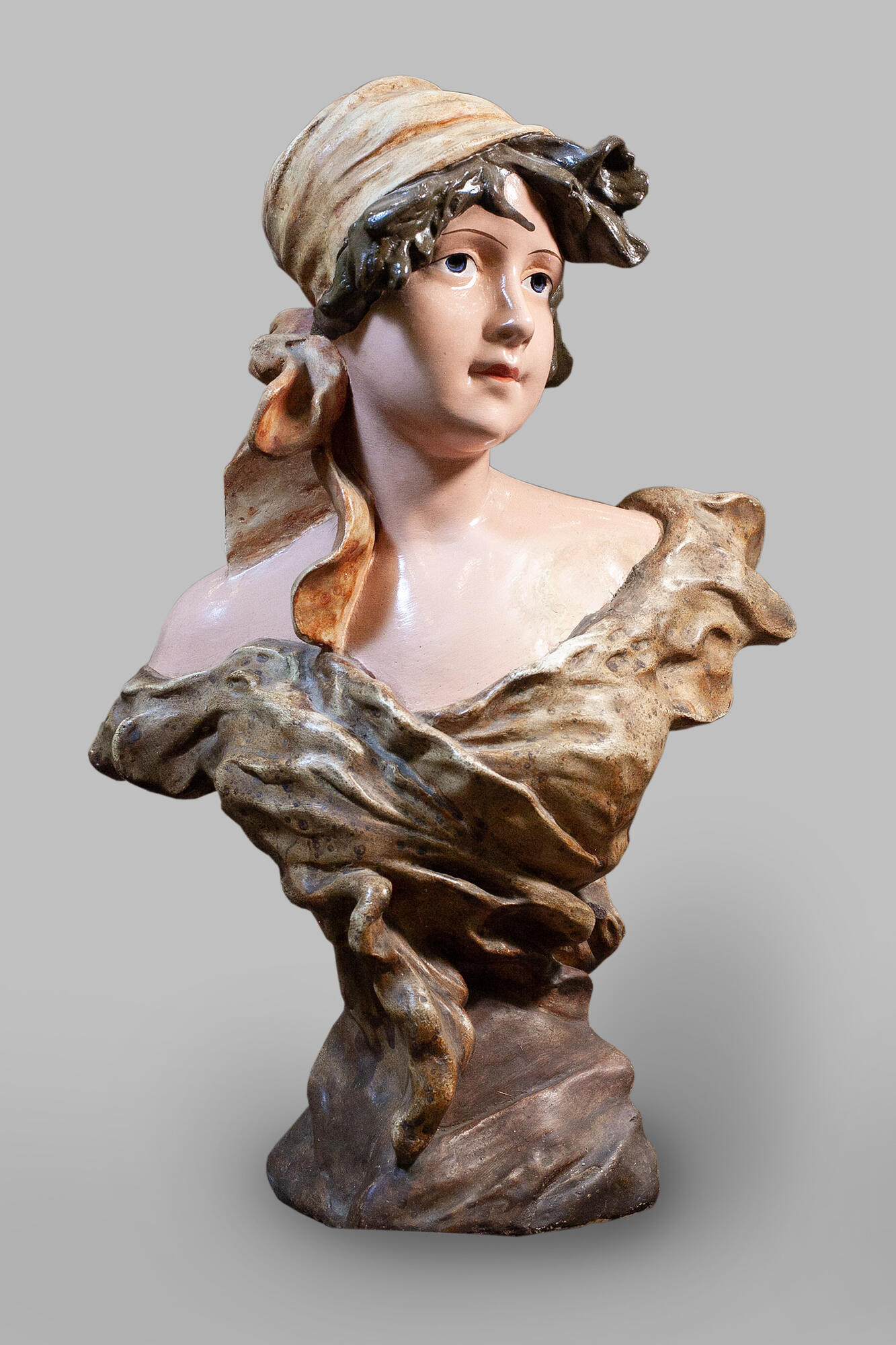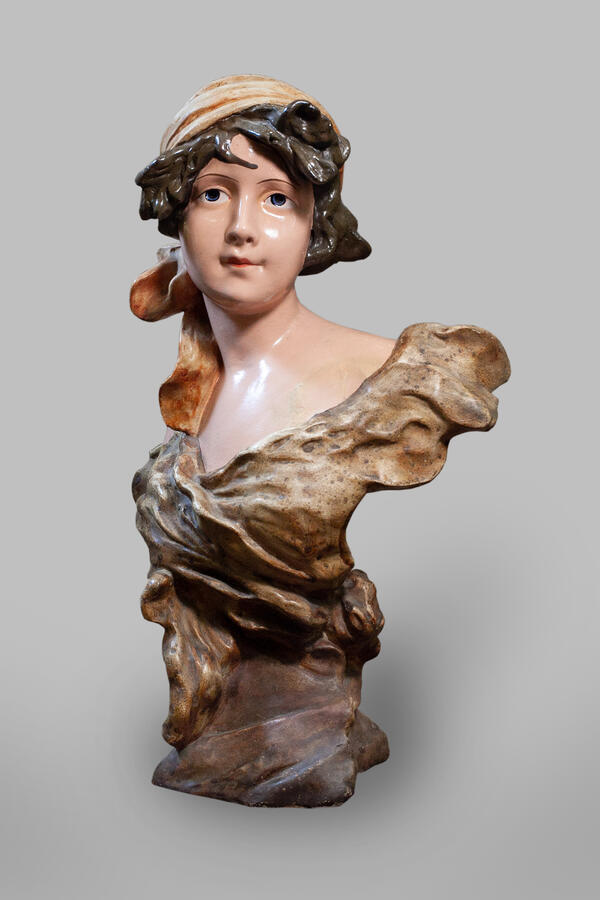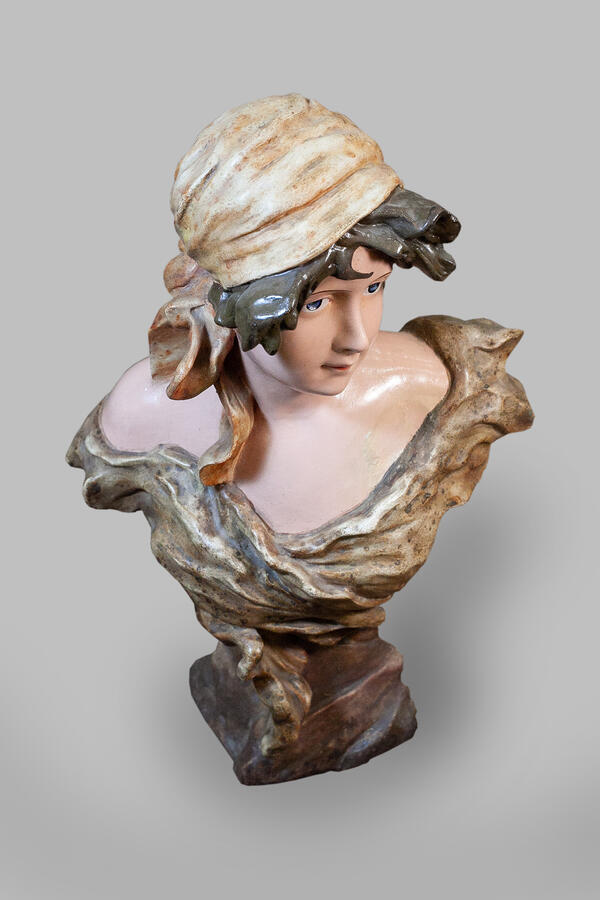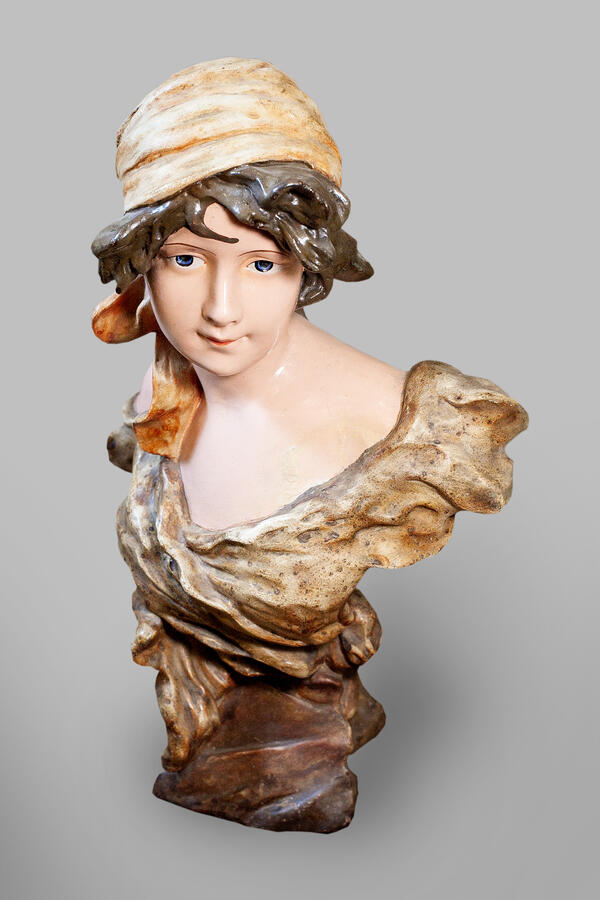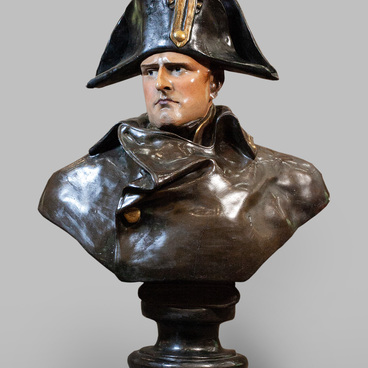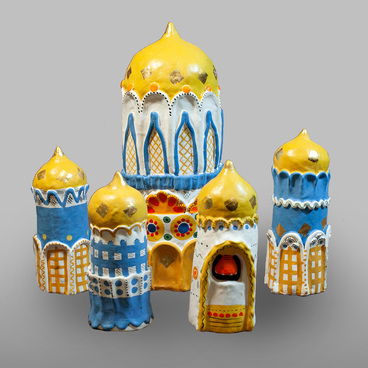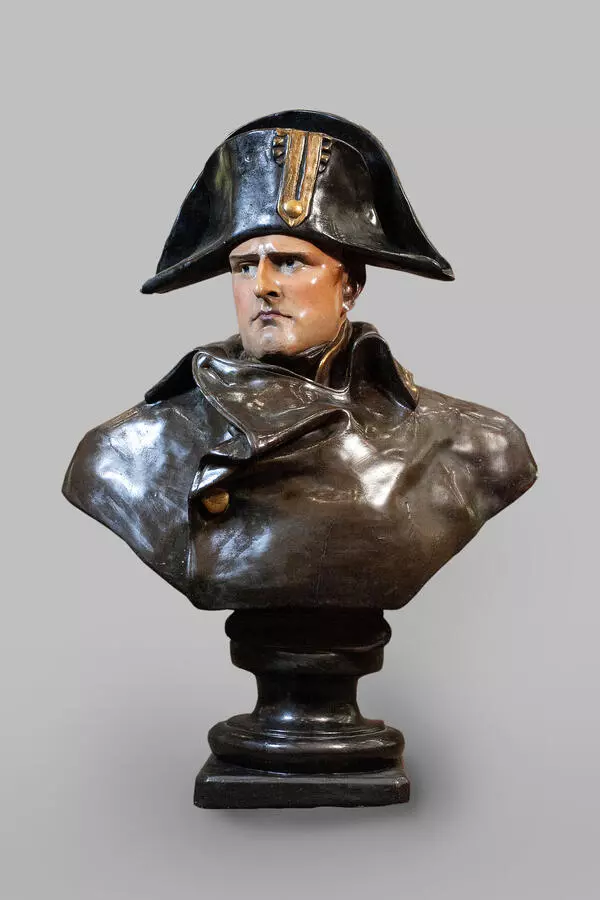In the second half of the 19th century, a unique and colorful craft appeared in the Vyatka Governorate — model plaster casting, that is, the casting of plaster statues based on existing models. Plaster copies were made from expensive bronze and porcelain figurines. They were much cheaper than the originals and were in high demand among residents.
There were several craftsmen in the Dymkovo settlement. Ivan Petrovich Karavayev was an iconic figure. He taught the new craft to his brother-in-law Konstantin Nikolayevich Isupov. The latter also started making popular plaster statues and sold them actively to the locals.
In the late 19th century, the handicraft industry took 4th place in the governorate’s economy after the manufacturing of furniture, squeezeboxes, and burr products (Vyatka craftsmen made various items from burr — a tree growth). The range of products depended on the time and the customer, fashion, and possibilities of local craftsmen. The products of Dymkovo craftsmen were in high demand at major Russian fairs and were displayed at prestigious exhibitions.
At the 1902 All-Russian Exhibition in St. Petersburg, Konstantin Isupov ranked second among the Vyatka craftsmen in terms of the number of exhibits. Several of Isupov’s plaster statues are kept at the Vasnetsov Brothers Art Museum in Kirov.
By the early 20th century, every owner of a plaster workshop had gathered a large collection of models and molds. These were copies of porcelain statues of the 18th and 19th centuries, works by Russian and foreign sculptors, statues, busts, and images of fairy-tale characters. Craftsmen achieved perfection in the casting of statues from models and their coloring. Buyers who sold products at fairs helped them with selling plaster statues.
In the 1930s, a factory of plaster and ceramic products was established in the Dymkovo settlement which started producing statues of famous politicians. Many pre-revolutionary molds were destroyed or hidden in attics. In 1934, the workshop of the “Kirov Artist” partnership was founded. The casting molds were made by professional sculptors. These were figurines of a ballerina, a skater, a violinist, a pioneer, as well as visual aids for schools. After the Great Patriotic War, the demand for such products decreased, and the craft experienced a decline.
The Vyatka Art Museum houses about 50 plaster statues provided by a private donor. Having studied the technology of plaster casting, the restoration artist Igor Trapeznikov brought many works of handicraft artists back to life, attaching broken parts and refreshing the paints.
There were several craftsmen in the Dymkovo settlement. Ivan Petrovich Karavayev was an iconic figure. He taught the new craft to his brother-in-law Konstantin Nikolayevich Isupov. The latter also started making popular plaster statues and sold them actively to the locals.
In the late 19th century, the handicraft industry took 4th place in the governorate’s economy after the manufacturing of furniture, squeezeboxes, and burr products (Vyatka craftsmen made various items from burr — a tree growth). The range of products depended on the time and the customer, fashion, and possibilities of local craftsmen. The products of Dymkovo craftsmen were in high demand at major Russian fairs and were displayed at prestigious exhibitions.
At the 1902 All-Russian Exhibition in St. Petersburg, Konstantin Isupov ranked second among the Vyatka craftsmen in terms of the number of exhibits. Several of Isupov’s plaster statues are kept at the Vasnetsov Brothers Art Museum in Kirov.
By the early 20th century, every owner of a plaster workshop had gathered a large collection of models and molds. These were copies of porcelain statues of the 18th and 19th centuries, works by Russian and foreign sculptors, statues, busts, and images of fairy-tale characters. Craftsmen achieved perfection in the casting of statues from models and their coloring. Buyers who sold products at fairs helped them with selling plaster statues.
In the 1930s, a factory of plaster and ceramic products was established in the Dymkovo settlement which started producing statues of famous politicians. Many pre-revolutionary molds were destroyed or hidden in attics. In 1934, the workshop of the “Kirov Artist” partnership was founded. The casting molds were made by professional sculptors. These were figurines of a ballerina, a skater, a violinist, a pioneer, as well as visual aids for schools. After the Great Patriotic War, the demand for such products decreased, and the craft experienced a decline.
The Vyatka Art Museum houses about 50 plaster statues provided by a private donor. Having studied the technology of plaster casting, the restoration artist Igor Trapeznikov brought many works of handicraft artists back to life, attaching broken parts and refreshing the paints.
